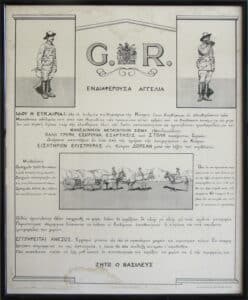A monument to the Cypriot mule corps, which fought on the side of the British during the first and second world wars, was unveiled at the Karafa bastion of Nicosia’s walled city on Thursday.
The mule corps, made up of Cypriot mules and their muleteers, saw active service between the summer of 1916 and April 1920, with professor Atrikkos Varnavas saying they played a “decisive role” in supplying British and allied forces in Thessaloniki and Istanbul.
The “Macedonian Mule Corps” was a formation of the British Salonika Army consisting primarily of Cypriot muleteers and their mules.
Varnavas said on Thursday that “about 12,000 Cypriot mule and donkey herders took part in the first world war, and several thousand more served in the second world war alongside the British forces.
“The use of horses, mules, and donkeys on the war front at the time was extremely valuable and important, since they transported military equipment to inaccessible areas that the motorised units of the army could not reach.”
He added that “Cypriots were excellent operators of these animals due to their agricultural backgrounds.”
He also said 177 members of the Cypriot mule corps were recorded as having died in action, and made reference to “the joint role of Greek-speaking Christians and Turkish-speaking Muslims who marched and served together”.
Achilleas Demetriades also spoke on behalf of the Cyprus mule corps initiative group, and thanked both the Nicosia municipality for hosting the plaque, and Nigel Allsopp, whose idea it had been to honour the mule corps.
“The ceremony creates a memorial not only for the people but also for the mules which served in the first world war,” he said, adding his hope that the memorial will “become a point of reference for animal lovers in Cyprus”.









Click here to change your cookie preferences